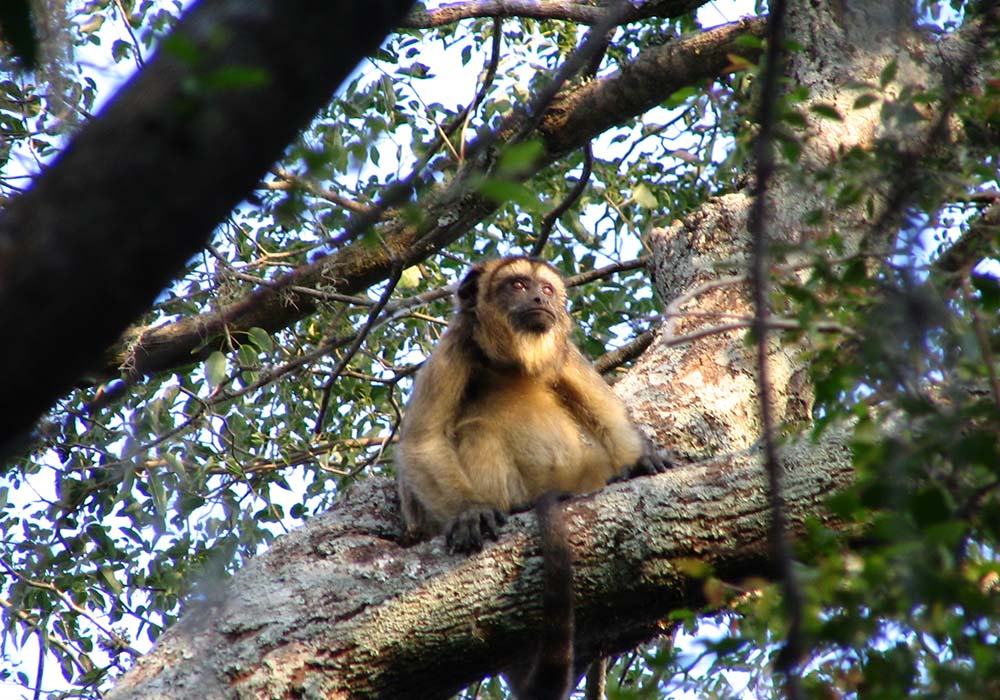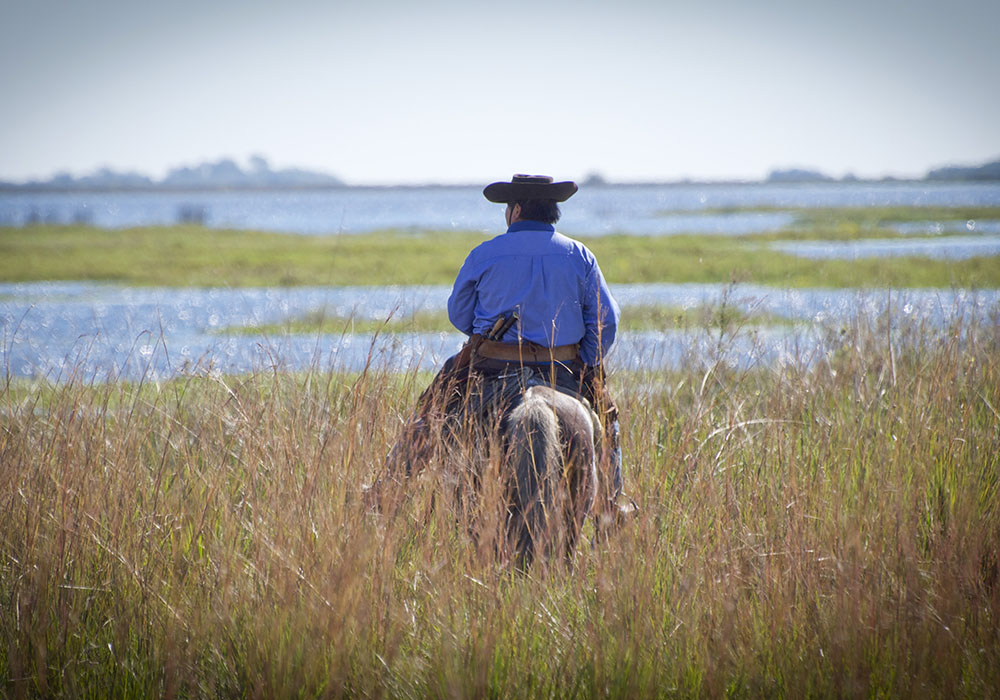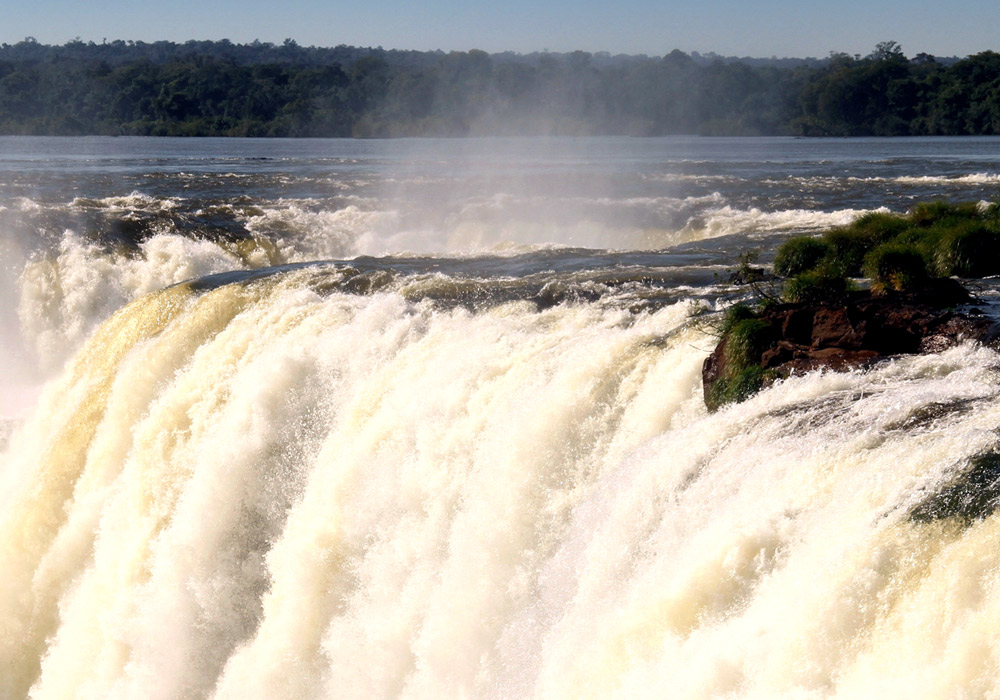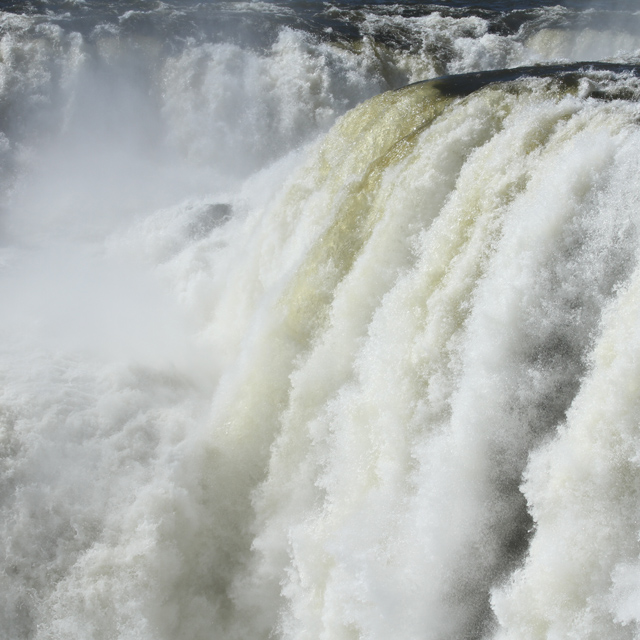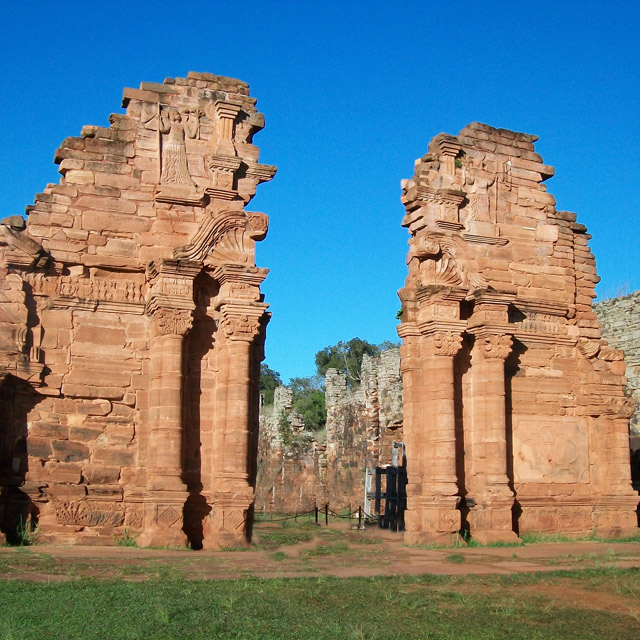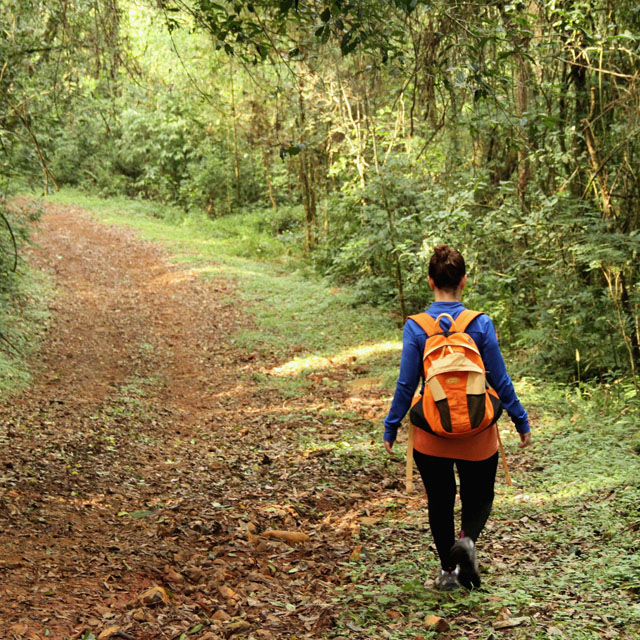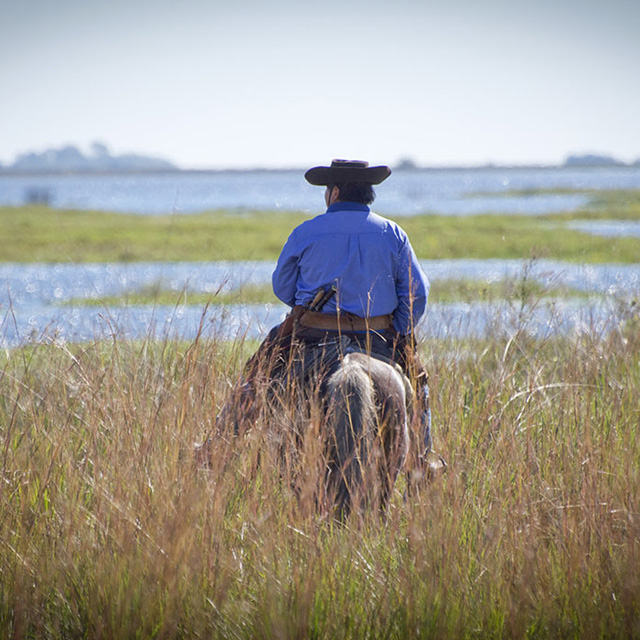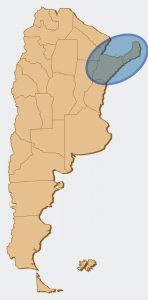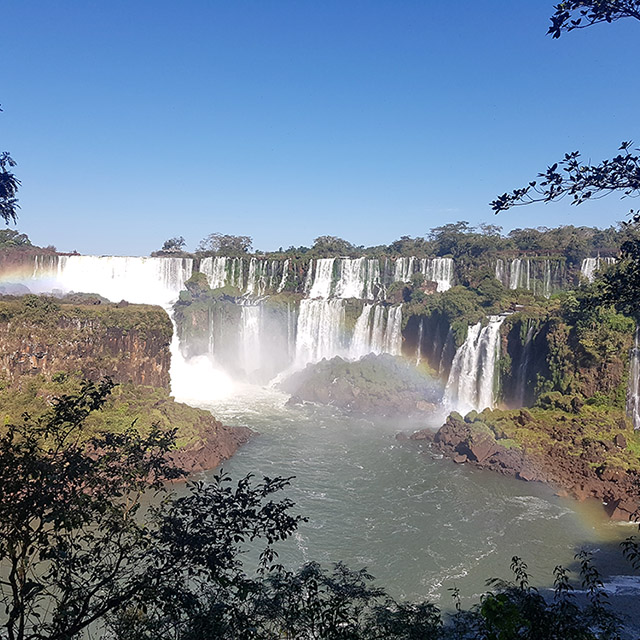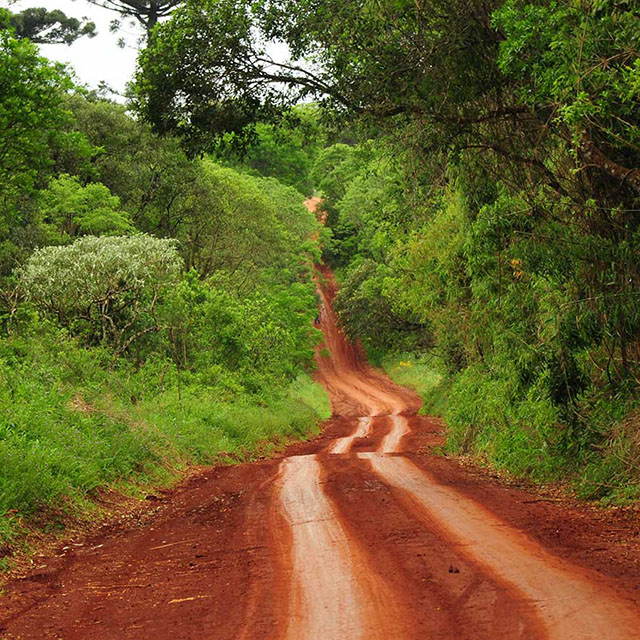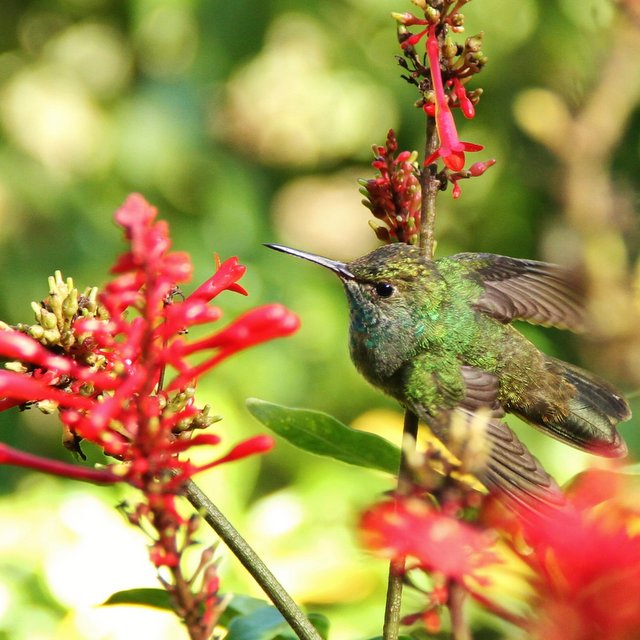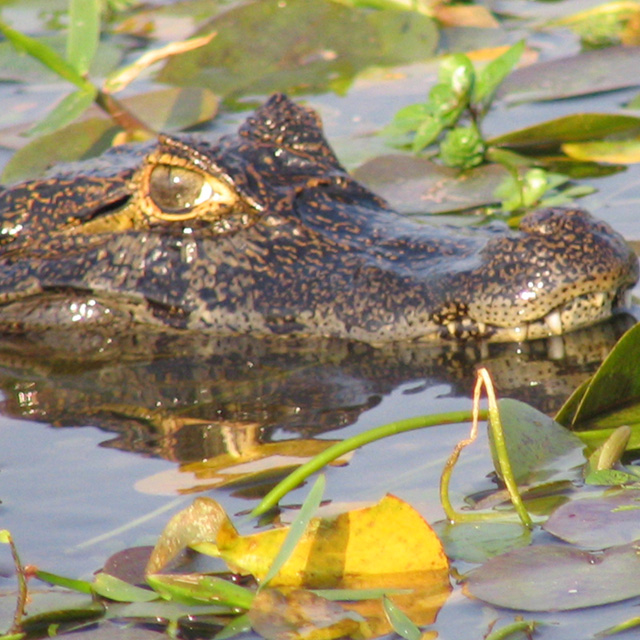Iguazú Falls
Iguazu
IGUAZÚ AND NORTH EAST ARGENTINA
Iguazú, Paraná and Uruguay Rivers enclose a very humid and warm area of Argentina.
To the north, on the frontier with Brazil, the Iguazú Falls cut through the subtropical jungle with tremendous force. This area was populated by important Guaraní communities until the arrival of the Europeans.
After the territories were conquered, the Company of Jesus devoted itself to converting these communities to Christianity while setting up powerful production centers. The ruins of quite a few of these still remain, the most outstanding being the ruins of San Ignacio Miní. The Guaraníes have mostly mixed with the Creoles although a few small communities still attempt to maintain their traditional lifestyle.
The Province of Misiones is the main producer of yerba mate –a popular local infusion here in Argentina. Plantations cultivated in the intensely red earth can be found lining roadways everywhere.
In Corrientes, Esteros del Iberá –an estuary– contains one of the world’s largest sweet water reserves. Deer, alligators, herons, capybaras and an abundant biodiversity inhabit this practically virgin area, a paradise for photographers and bird watchers.
North East Argentina puts visitors in direct contact with wild nature and the local culture.
